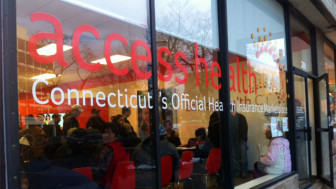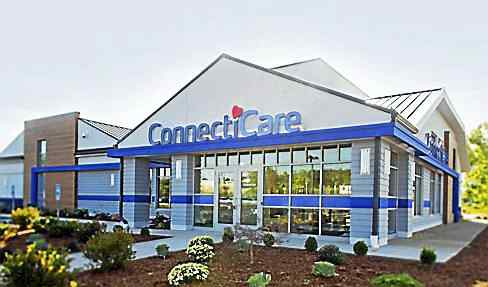Consumers can begin shopping for 2017 health insurance through Access Health CT (AHCT) starting Nov. 1, but they will encounter fewer options and steeper prices than in previous years.
Now in its fourth year, the state’s health insurance marketplace looks different than it has in the past. Most notably, it has only two insurance carriers, ConnectiCare and Anthem, instead of four.
State insurance regulators approved a 17.4 percent increase in ConnectiCare’s rates for exchange plans and approved a 22.4 percent rate hike for Anthem’s plans.
With the high-profile departure of UnitedHealthcare from the exchange and health insurance co-op HealthyCT going out of business, consumers will no longer be able to enroll in those plans.

Open enrollment begins Nov. 1.
That means consumers currently enrolled in UnitedHealthcare and HealthyCT plans must find alternative options by Dec. 31. The exchange currently has about 9,500 people enrolled in HealthyCT and 1,800 in UnitedHealthcare plans, according to AHCT officials.
AHCT officials expect the exchange to enroll 125,000 consumers in plans during the upcoming open enrollment period that runs Nov. 1 to Jan. 31, up from 116,000 last year, said Andrea Ravitz, marketing director.
Of those currently in plans bought on the exchange, 60 percent are enrolled in either ConnectiCare or Anthem, which should soften the blow of other carriers leaving, she said.
Still, she said, “We want to make sure that people understand that if they chose [UnitedHealthcare or HealthyCT] in the past, those companies are no longer a choice.”
The Marketplace
AHCT is the online marketplace created by the Affordable Care Act (ACA), sweeping health care reform legislation that requires most Americans to have health insurance or pay a penalty.
During open enrollment people without coverage can shop for insurance plans and those with coverage can renew or change their plans.
For 2017, consumers can shop on the marketplace for plans offered by ConnectiCare and Anthem. Open enrollment runs Nov. 1 through Jan. 31, but individuals must enroll in plans by Dec. 15 if they want coverage to begin Jan. 1.
After open enrollment ends Jan. 31, consumers can sign up for 2017 coverage only if they have a qualifying life event, such as loss of insurance, marriage or the birth of a child.
Consumers can apply online, call AHCT at 855-805-4325, get in-person help, or use AHCT’s free mobile app for smartphones or tablets.
AHCT call centers are being operated by a new vendor, Faneuil Inc., which Ravitz said should result in better customer service. The vendor was chosen following an open-bid process that included prior client recommendations, among other things. AHCT hired Faneuil in September.
Also new this year, Faneuil is hiring about 20 insurance brokers to help consumers by phone and in person at enrollment centers. In previous years, insurance carriers had incentivized brokers to enroll consumers in exchange plans by paying them a commission—about $16 per member per month—but the carriers are no longer paying those commissions, Ravitz said, so AHCT has devised a short-term plan to give consumers access to brokers.

Photo Provided By ConnectiCare.
ConnectiCare opened a health insurance store in Manchester.
As in the past, plans are organized into bronze, silver, gold and platinum categories, and consumers should compare plans to see what works best for them. Platinum plans, for instance, typically have higher premiums but lower out-of-pocket costs whereas bronze plans have the lowest premiums but highest out-of-pocket costs.
While most people have to wait until Nov.1 to enroll in plans, enrollment in Medicaid (HUSKY) and the Children’s Health Insurance Plan (CHIP) is open year-round to eligible people and families.
Paying The Price For No Insurance
As in previous years, people who don’t have health insurance will face fines in 2017 but they are not increasing over 2016. Most people without coverage in 2017 will pay either 2.5 percent of their yearly household income or $695 per person ($347.50 per child under age 18), whichever is higher.
Consumers will pay the fine on the federal income tax return they file for the year in which they lack coverage. Most people will file 2017 returns in early 2018, and will be asked on their returns whether they had insurance coverage in 2017.
There are some exemptions but the vast majority of consumers need insurance to avoid a fine.
Consumers faced the same fines for lacking coverage in 2016, but those fines were higher than the previous year. In 2015, consumers with no coverage paid 2 percent of yearly household income or $325 per person ($162.50 per child), whichever is higher.
While there are no liens, levies or criminal penalties for failing to pay the fine, those who don’t pay will see it deducted from future tax refunds.
For more information on the Affordable Care Act click here.